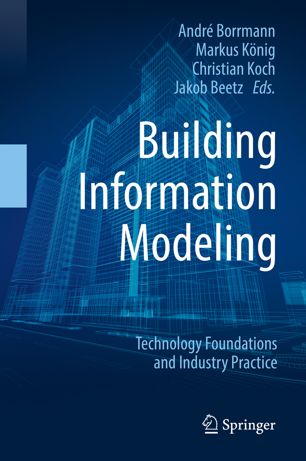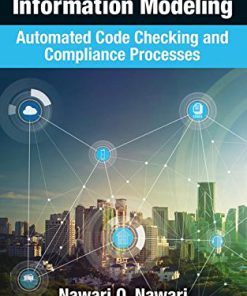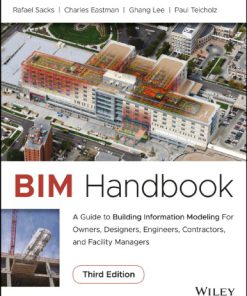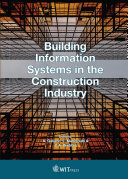Building Information Modeling: Technology Foundations and Industry Practice André Borrmann
$50.00 Original price was: $50.00.$25.00Current price is: $25.00.
This completed downloadable of Building Information Modeling: Technology Foundations and Industry Practice André Borrmann 
Instant downloaded Building Information Modeling: Technology Foundations and Industry Practice André Borrmann pdf docx epub after payment.
Product details:
- ISBN-10 : 3319928619
- ISBN-13 : 978-3319928616
- Author: André Borrmann (Editor), Markus König (Editor), Christian Koch (Editor), Jakob Beetz (Editor)
Building Information Modeling (BIM) refers to the consistent and continuous use of digital information throughout the entire lifecycle of a built facility, including its design, construction and operation. In order to exploit BIM methods to their full potential, a fundamental grasp of their key principles and applications is essential. Accordingly, this book combines discussions of theoretical foundations with reports from the industry on currently applied best practices.
The book’s content is divided into six parts: Part I discusses the technological basics of BIM and addresses computational methods for the geometric and semantic modeling of buildings, as well as methods for process modeling. Next, Part II covers the important aspect of the interoperability of BIM software products and describes in detail the standardized data format Industry Foundation Classes. It presents the different classification systems, discusses the data format CityGML for describing 3D city models and COBie for handing over data to clients, and also provides an overview of BIM programming tools and interfaces. Part III is dedicated to the philosophy, organization and technical implementation of BIM-based collaboration, and discusses the impact on legal issues including construction contracts. In turn, Part IV covers a wide range of BIM use cases in the different lifecycle phases of a built facility, including the use of BIM for design coordination, structural analysis, energy analysis, code compliance checking, quantity take-off, prefabrication, progress monitoring and operation. In Part V, a number of design and construction companies report on the current state of BIM adoption in connection with actual BIM projects, and discuss the approach pursued for the shift toward BIM, including the hurdles taken. Lastly, Part VI summarizes the book’s content and provides an outlook on future developments.
The book was written both for professionals using or programming such tools, and for students in Architecture and Construction Engineering programs.
Table of contents:
Cover
Front Matter
1. Building Information Modeling: Why? What? How?
Part I. Technological Foundations
2. Principles of Geometric Modeling
3. Data Modeling
4. Process Modeling
Part II. Interoperability in AEC
5. Industry Foundation Classes: A Standardized Data Model for the Vendor-Neutral Exchange of Digital Building Models
6. Process-Based Definition of Model Content
7. IFC Certification of BIM Software
8. Structured Vocabularies in Construction: Classifications, Taxonomies and Ontologies
9. COBie: A Specification for the Construction Operations Building Information Exchange
10. Linked Data
11. Modeling Cities and Landscapes in 3D with CityGML
12. BIM Programming
Part III. BIM-Based Collaboration
13. BIM Project Management
14. Collaborative Data Management
15. Common Data Environment
16. BIM Manager
17. Integrating BIM in Construction Contracts
Part IV. BIM Use Cases
18. BIM-Based Design Coordination
19. BIM for Structural Engineering
20. BIM for Energy Analysis
21. BIM for Construction Safety and Health
22. BIM-Based Code Compliance Checking
23. BIM-Based Quantity Take-Off
24. Building Surveying for As-Built Modeling
25. BIM in Industrial Prefabrication for Construction
26. BIM for 3D Printing in Construction
27. BIM-Based Production Systems
28. BIM-Based Progress Monitoring
29. BIM in the Operation of Buildings
Part V. Industrial Practice
30. BIM at HOCHTIEF Solutions
31. Arup’s Digital Future: The Path to BIM
32. BIM at OBERMEYER Planen + Beraten
33. BIM at Hilti
34. BIM at STRABAG
Part VI. Summary and Outlook
35. Conclusions and Outlook
Back Matter
People also search:
building information modeling (bim)
building information modeling software
building information modeling salary
building information modeling course
building information modeling is what
You may also like…
Computers - Computer Science
Applied Computing and Information Technology 1st Edition by Roger Lee ISBN 3030252167 978-3030252168
Engineering
Building information modeling : automated code checking and compliance processes 1st Edition Nawari
Engineering
Modeling and Simulation : Challenges and Best Practices for Industry First Edition Dubois
Computers - Computer Science
Information Technology and Applied Mathematics Peeyush Chandra
Arts - Architecture












